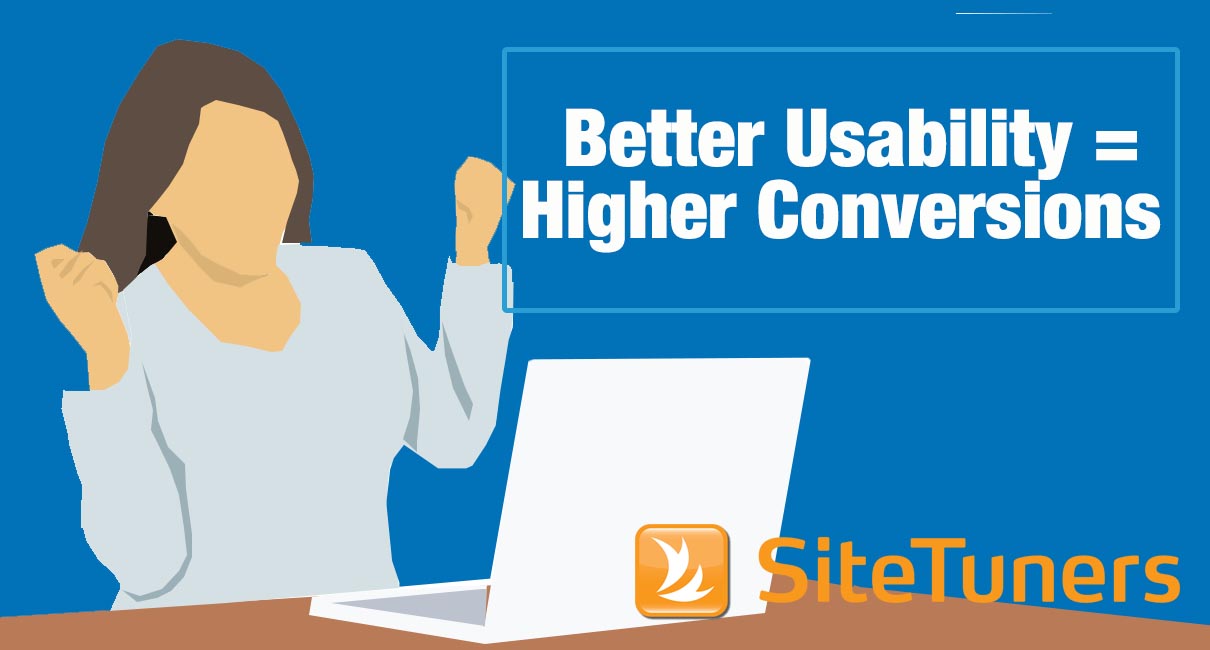
It’s surprising to me, with all the time invested in design, branding, content, and social, that few website owners have an ongoing focus on usability. Usability may be the single most important factor in conversions. If your users can’t figure out how to find what they’re looking for, or if your site frustrates/confuses/annoys them, you’re losing conversions.
If you really want to move the needle in 2012, resolve to make your website more user-centric. Here are some steps you can take to identify where your site may be tripping up your visitors.
Usability Testing
By testing your website on actual representative users, usability testing allows you to uncover disconnects between visitors’ expectations and how your site is presented. Many larger organizations work with usability testing companies that help recruit appropriate subjects, conduct the tests, and deliver detailed findings. But usability testing can also be done expensively and rather informally.
By watching as few as three subjects through your mission-critical conversion task, you can often uncover significant issues with your current landing page. All you need for this kind of informal approach is a quiet room, a computer with webcam and Internet connection, and a clear task statement of what you want your subjects to accomplish.
Ask your test subjects to “think out loud” as they attempt to complete their designated task. Where are they looking? What catches their attention? Which button or navigational icon do they think will lead them to their goal? With a webcam and inexpensive software, you can record their narrated experience of your site. Another option is to sit silently alongside the test and simply observe and take written notes.
Whichever method you use, you’re bound to be surprised when you watch consumers actually click the “wrong” button, overlook what you thought was a clear call-to-action, or otherwise struggle with the seemingly simple assigned task. Once you realize that your target audience looks at your site very differently from how you “expected” them to, you’ll have a much higher degree of empathy for your visitors and will see your landing page problems in a new light.
Best Practices Reviews
Most marketers are familiar with the difference between “primary” and “secondary” as it pertains to market research. Primary research is commissioned specifically for you, with your audience (or people with similar characteristics to your audience) and your product/service objectives in mind. Secondary research is aggregated data compiled by government, trade, or other organizations, from which you can extrapolate information that is likely to be meaningful to your business and provide guidance for business planning.
Where customized usability tests are similar to “primary research,” hiring a usability expert to perform a best practices review is more like a “secondary research” approach. It’s an excellent way to cost-effectively gather important insights about your current site based on aggregated data collected over hundreds of live usability tests.
A good usability expert will be able to quickly focus on potential problems without conducting a single test on your site. Getting a best practices review from a usability expert not only provides you specific expertise that you might not have on your internal team, but also brings an outside perspective to uncovering site problems. Often, organizations that are reluctant to take input from their own staff will listen to the advice of an external expert.
Attention Studies
This technology can literally show you what people are looking at, in what order, and for how long. Eye-tracking technology for website design testing has become cheaper, better, and less obtrusive over time. New software visualization techniques and analysis have also made the presentation of eye-tracking results more accessible for the mainstream online marketing audience.
-
- Eye Tracking. Eye tracking is particularly useful in detecting problems in the earlier stages of the decision process (awareness and interest). If most test subjects don’t look at the desired part of the page, they’re not even aware that the conversion action is possible. Such studies are an excellent source of problems regarding page layout, visual presentation of information and images, and emphasis.
-
- Mouse tracking. Mouse tracking uses the movement of the mouse as a proxy for visual attention. A Carnegie Mellon study found that around 85 percent of mouse “rests” correlated to site areas that the user notices or ignores. Since then, several tools have launched as less expensive alternatives to eye tracking, primarily aimed at small businesses. The data is collected via snippets of code placed on target pages and the recording of site visitor actions.
-
- Simulated attention. These algorithms evaluate areas of site attention for landing page components or entire pages. These systems base their calculations on best practice rules for image recognition, font treatment, color use, number of competing elements, and other items proven to influence attention. This type of visitor modeling allows for usability checks before the page is finalized or published.
The bottom line is, there are lots of ways for you to easily see how well your site is meeting the expectations of your visitors, and making even small improvements in usability can make a significant impact on your revenue, regardless of your conversion action. Web designers and marketers have perceptual blindness when it comes to evaluating their own sites. They overlook the most blatant usability problems because they already know how to accomplish a specific task. With that in mind, spend the month of December conducting at least one of the usability checks outlined above (specific resources are available in the Conversion Ninja Toolbox.) That alone will give you the basis for your 2012 website improvement plan.
This article originally appeared in Tim’s ClickZ column November 29, 2011
Take your conversions to the next level.Learn how our experts at SiteTuners can help kickstart your conversion rate optimization process or get better results from your CRO efforts. Give us 30 minutes, and we’ll show you a roadmap to your digital growth! |
